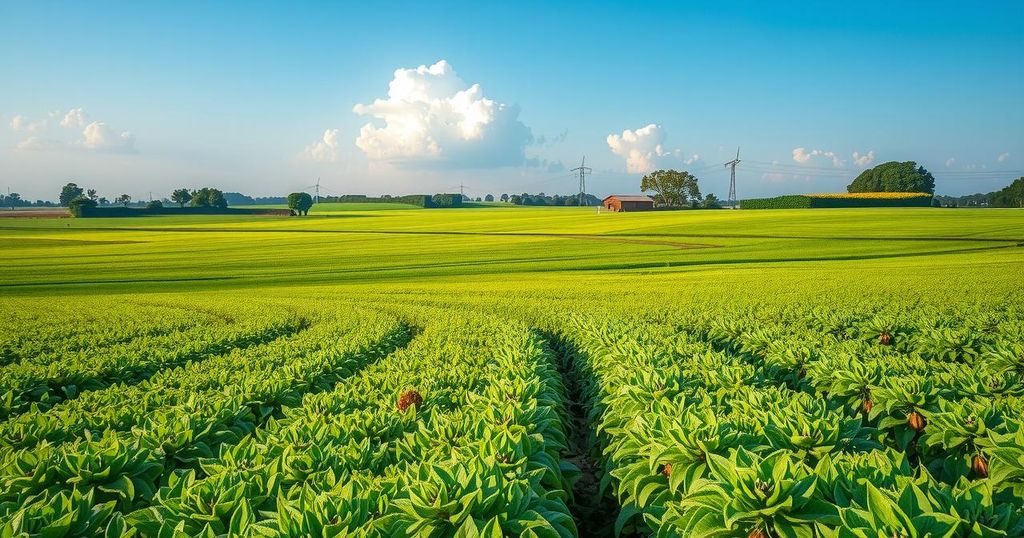Leveraging Natural Gas to Enhance Agricultural Yield in Angola

Angola’s National Development Plan (2023-2027) focuses on improving agricultural productivity through significant investments in natural gas. The $60 billion natural gas projects will support affordable energy for the agriculture sector, including fertilizer production. The upcoming AOG conference will facilitate discussions on maximizing the strategic potential of the natural gas value chain.
The Angolan National Development Plan (NDP) for 2023-2027 aims to enhance agricultural productivity, focusing on improving food security. With significant investment in natural gas pipelines—estimated at $60 billion—these upcoming projects will provide an economical energy source, crucial for the agriculture sector’s growth. The Angola Oil & Gas (AOG) conference, scheduled for September 3-4 in Luanda, will discuss the strategic benefits of investing in the natural gas value chain across various sectors, promoting topics such as power generation and fertilizer production.
Currently, Angola imports around $120 million worth of fertilizer each year to satisfy local demand. However, future gas projects are anticipated to decrease these imports by facilitating ammonia and urea production. A partnership between Toyo Engineering Corporation and Angola’s Amufert aims to license technology for a urea plant in Soyo, which will produce 4,000 tons of fertilizer daily for the domestic market. The African Export-Import Bank has committed $1.4 billion to this project, set to begin operations in 2027, ultimately supporting farmers with reliable fertilizer sources.
Natural gas is also anticipated to provide reliability in fuel supplies for agriculture, which currently depends heavily on biomass and diesel. The distribution of liquefied petroleum gas (LPG) is being strengthened, with an acquisition of 1.3 million tons planned for the domestic market by Q4 2024. Since Q1 2024, LPG distribution has increased by 15%, with projections indicating a 31% rise in demand by 2027. Additionally, the Angolan national oil company, Sonangol, is enhancing gas-filling capacity significantly, thereby supporting fuel security within the agriculture sector.
Several forthcoming gas projects promise to advance agricultural operations further. The Soyo II combined-cycle power plant, expected to be operational by 2025, will increase electricity access by 20%. The Quiluma and Maboqueiro fields, as part of Angola’s first non-associated gas project, will yield 330 million standard cubic feet per day for the Angola LNG project, enhancing gas output and supporting agriculture-related activities. The AOG conference serves as a vital platform for stakeholders to engage and foster advancements in Angola’s oil and gas sector, with backing from multiple authoritative organizations in the industry.
In summary, Angola’s strategic investment in natural gas is poised to significantly enhance its agricultural productivity and food security. The ongoing and upcoming projects, especially in fertilizer production and energy accessibility, underscore a commitment to transforming agricultural practices. The AOG conference represents an essential opportunity for collaboration among industry players, facilitating discussions that can drive further advancements in Angola’s agriculture and energy sectors.
Original Source: energycapitalpower.com








